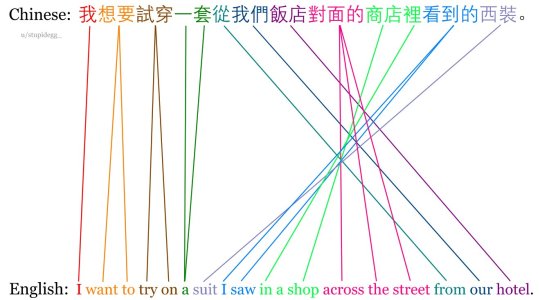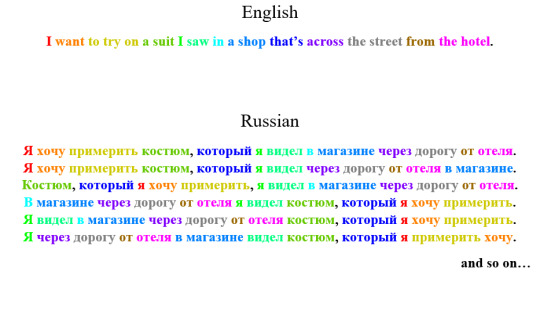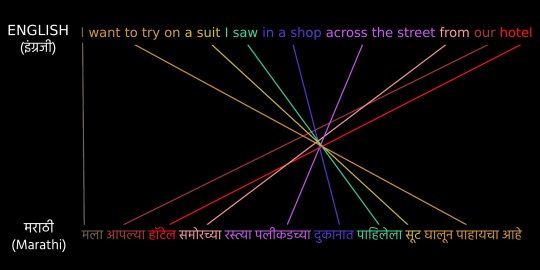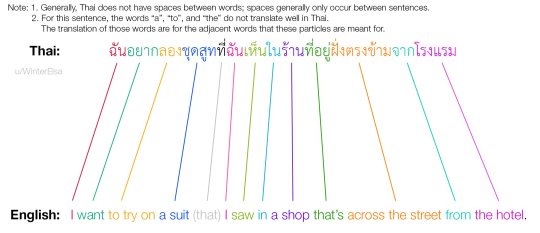Text
a reading list on the human labor behind AI, machine learning, data labeling, and content moderation
bringing a global labor perspective to the “ai is gonna steal our jobs!” discourse that usamerican creative workers don’t really like…
(based on this twitter thread)
Google’s AI Chatbot Is Trained by Humans Who Say They’re Overworked, Underpaid and Frustrated (12 July 2023)
“If you want to ask, what is the secret sauce of Bard and ChatGPT? It’s all of the internet. And it’s all of this labeled data that these labelers create,” said Laura Edelson, a computer scientist at New York University. “It’s worth remembering that these systems are not the work of magicians — they are the work of thousands of people and their low-paid labor.”
The Hidden Workforce That Helped Filter Violence and Abuse Out of ChatGPT (11 July 2023)
ChatGPT is one of the most successful tech products ever launched. And crucial to that success is a group of largely unknown data workers in Kenya. By reviewing disturbing, grotesque content, often for wages of just two to three dollars an hour, they helped make the viral chatbot safe. WSJ’s Karen Hao traveled to Kenya to meet those workers and hear about what the job cost them.
The workers at the frontlines of the AI revolution: The global labor force of outsourced and contract workers are early adopters of generative AI — and the most at risk (11 July 2023)
Since the blockbuster launch of ChatGPT at the end of 2022, future-of-work pontificators, AI ethicists, and Silicon Valley developers have been fiercely debating how generative AI will impact the way we work. Some six months later, one global labor force is at the frontline of the generative AI revolution: offshore outsourced workers.
Inside the AI Factory: the humans that make tech seem human (20 June 2023)
You might miss this if you believe AI is a brilliant, thinking machine. But if you pull back the curtain even a little, it looks more familiar, the latest iteration of a particularly Silicon Valley division of labor, in which the futuristic gleam of new technologies hides a sprawling manufacturing apparatus and the people who make it run.
OpenAI Used Kenyan Workers on Less Than $2 Per Hour to Make ChatGPT Less Toxic (18 January 2023)
OpenAI took a leaf out of the playbook of social media companies like Facebook, who had already shown it was possible to build AIs that could detect toxic language like hate speech to help remove it from their platforms. The premise was simple: feed an AI with labeled examples of violence, hate speech, and sexual abuse, and that tool could learn to detect those forms of toxicity in the wild. That detector would be built into ChatGPT to check whether it was echoing the toxicity of its training data, and filter it out before it ever reached the user. It could also help scrub toxic text from the training datasets of future AI models.
To get those labels, OpenAI sent tens of thousands of snippets of text to an outsourcing firm in Kenya, beginning in November 2021. Much of that text appeared to have been pulled from the darkest recesses of the internet. Some of it described situations in graphic detail like child sexual abuse, bestiality, murder, suicide, torture, self harm, and incest. … The data labelers employed by Sama on behalf of OpenAI were paid a take-home wage of between around $1.32 and $2 per hour…
The ‘Invisible’, Often Unhappy Workforce That’s Deciding the Future of AI (9 December 2023)
Among a range of conclusions, the Google study finds that the crowdworkers’ own biases are likely to become embedded into the AI systems whose ground truths will be based on their responses; that widespread unfair work practices (including in the US) on crowdworking platforms are likely to degrade the quality of responses; and that the ‘consensus’ system (effectively a ‘mini-election’ for some piece of ground truth that will influence downstream AI systems) which currently resolves disputes can actually throw away the best and/or most informed responses.
The Exploited Labor Behind Artificial Intelligence: Supporting transnational worker organizing should be at the center of the fight for “ethical AI.” (13 October 2022)
So-called AI systems are fueled by millions of underpaid workers around the world, performing repetitive tasks under precarious labor conditions. And unlike the “AI researchers” paid six-figure salaries in Silicon Valley corporations, these exploited workers are often recruited out of impoverished populations and paid as little as $1.46/hour after tax. Yet despite this, labor exploitation is not central to the discourse surrounding the ethical development and deployment of AI systems.
A factory line of terrors: TikTok’s African content moderators complain they were treated like robots, reviewing videos of suicide and animal cruelty for less than $3 an hour (1 August 2022)
“The devil of this job is that you get sick slowly — without even noticing it,” said Wisam, a former content moderator who now trains others for Majorel. … While TikTok does use artificial intelligence to help review content, the technology is notoriously poor in non-English languages. For this reason, humans are still used to review most of the heinous videos on the platform.
Human Touch: Artificial intelligence may be making some jobs obsolete but it has given a new lease of life to one group of people who play an unglamorous but critical role in the machine learning pipeline: first generation women workers in Indian towns and villages (20 July 2022)
“Any major technology company in the last 10 years has been powered by a throng of people … At some level, there’s denial. Investors like to hear that technology sells itself once you write the code. But that’s not really true.” … “Data work has a racial and class dynamic. It is outsourced to developing countries while model work is done by engineers largely in developed nations … Without their labour, there would be no AI.”
Desperate Venezuelans are making money by training AI for self-driving cars (29 August 2022)
How the AI industry profits from catastrophe: As the demand for data labeling exploded, an economic catastrophe turned Venezuela into ground zero for a new model of labor exploitation (20 April 2022)
Most profit-maximizing algorithms, which underpin e-commerce sites, voice assistants, and self-driving cars, are based on deep learning, an AI technique that relies on scores of labeled examples to expand its capabilities. … The insatiable demand has created a need for a broad base of cheap labor to manually tag videos, sort photos, and transcribe audio. The market value of sourcing and coordinating that “ghost work” … is projected to reach $13.7 billion by 2030.
Over the last five years, crisis-ridden Venezuela has become a primary source of this labor. The country plunged into the worst peacetime economic catastrophe facing a country in nearly 50 years right as demand for data labeling was exploding. Droves of well-educated people who were connected to the internet began joining crowdworking platforms as a means of survival.
Facebook Faces New Lawsuit Alleging Human Trafficking and Union-Busting in Kenya (11 May 2022)
“We can’t have safe social media if the workers who protect us toil in a digital sweatshop… We’re hoping this case will send ripples across the continent—and the world. The Sama Nairobi office is Facebook’s moderation hub for much of East and South Africa. Reforming Facebook’s factory floor here won’t just affect these workers, but should improve the experience of Facebook users in Kenya, South Africa, Ethiopia, and other African countries.”
Inside Facebook’s African Sweatshop (14 February 2022)
Here in Nairobi, Sama employees who speak at least 11 African languages between them toil day and night, working as outsourced Facebook content moderators: the emergency first responders of social media. They perform the brutal task of viewing and removing illegal or banned content from Facebook before it is seen by the average user. …
The testimonies of Sama employees reveal a workplace culture characterized by mental trauma, intimidation, and alleged suppression of the right to unionize. The revelations raise serious questions about whether Facebook… is exploiting the very people upon whom it is depending to ensure its platform is safe
Refugees help power machine learning advances at Microsoft, Facebook, and Amazon: Big tech relies on the victims of economic collapse (22 September 2021)
Microwork comes with no rights, security, or routine and pays a pittance — just enough to keep a person alive yet socially paralyzed. Stuck in camps, slums, or under colonial occupation, workers are compelled to work simply to subsist under conditions of bare life. This unequivocally racialized aspect to the programs follows the logic of the prison-industrial complex, whereby surplus — primarily black — populations [in the United States] are incarcerated and legally compelled as part of their sentence to labor for little to no payment. Similarly exploiting those confined to the economic shadows, microwork programs represent the creep of something like a refugee-industrial complex.
(an excerpt from the book Work Without the Worker: Labour in the Age of Platform Capitalism by Philip Jones)
AI needs to face up to its invisible-worker problem (11 December 2020)
A.I. Is Learning From Humans. Many Humans. (16 August 2019)
A.I. researchers hope they can build systems that can learn from smaller amounts of data. But for the foreseeable future, human labor is essential. “This is an expanding world, hidden beneath the technology,” said Mary Gray, an anthropologist at Microsoft and the co-author of the book “Ghost Work,” which explores the data labeling market. “It is hard to take humans out of the loop.”
[book] Behind the Screen: Content Moderation in the Shadows of Social Media by Sarah T. Roberts (June 2019)
Social media on the internet can be a nightmarish place. A primary shield against hateful language, violent videos, and online cruelty uploaded by users is not an algorithm. It is people. Mostly invisible by design, more than 100,000 commercial content moderators evaluate posts on mainstream social media platforms: enforcing internal policies, training artificial intelligence systems, and actively screening and removing offensive material—sometimes thousands of items per day
[book] Ghost Work: How to Stop Silicon Valley from Building a New Global Underclass by Mary L. Gray and Siddharth Suri (May 2019)
Hidden beneath the surface of the web, lost in our wrong-headed debates about AI, a new menace is looming. … services delivered by companies like Amazon, Google, Microsoft, and Uber can only function smoothly thanks to the judgment and experience of a vast, invisible human labor force. These people doing “ghost work” make the internet seem smart. They perform high-tech piecework: flagging X-rated content, proofreading, designing engine parts, and much more. An estimated 8 percent of Americans have worked at least once in this “ghost economy,” and that number is growing. They usually earn less than legal minimums for traditional work, they have no health benefits, and they can be fired at any time for any reason, or none.
[follow-up articles about the book here and here]
Inmates in Finland are training AI as part of prison labor (28 March 2019)
“Prison labor” is usually associated with physical work, but inmates at two prisons in Finland are doing a new type of labor: classifying data to train artificial intelligence algorithms for a startup. … “The hook is that we have this kind of hype circulating around AI so that we can masquerade really old forms of labor exploitation as ‘reforming prisons,’… They’re connecting social movements, reducing it to hype, and using that to sell AI.”
How Crowdworkers Became the Ghosts in the Digital Machine: Since 2005, Amazon has helped create one of the most exploited workforces no one has ever seen (5 February 2014)
Crowdworking is often hailed by its boosters as ushering in a new age of work. With the zeal of high-tech preachers, they cast it as a space in which individualism, choice and self-determination flourish. … But if you happen to be a low-end worker doing the Internet’s grunt work, a different vision arises. According to critics, Amazon’s Mechanical Turk may have created the most unregulated labor marketplace that has ever existed. Inside the machine, there is an overabundance of labor, extreme competition among workers, monotonous and repetitive work, exceedingly low pay and a great deal of scamming. In this virtual world, the disparities of power in employment relationships are magnified many times over, and the New Deal may as well have never happened.
3K notes
·
View notes
Text
I Verbs in Chinese
A guide to some common I verbs in Chinese~
Ignore - 忽视 - hūshì
Illuminate - 照亮- zhàoliàng
Imagine - 想象 - xiǎngxiàng
Imitate - 模仿 - mófǎng
Improve - 改善 - gǎishàn
Implement - 实施 - shíshī
Include - 包括 - bāokuò
Incorporate - 合并 - hébìng
Increase - 增加 - zēngjiā
Indulge - 沉迷 - chénmí
Inform - 通知 - tōngzhī
Innovate - 创新 - chuàngxīn
Initiate - 启动 - qǐdòng
Inquire - 询问 - xúnwèn
Inspire - 启发 - qǐfā
Instruct - 指示 - zhǐshì
Interact - 互动 - hùdòng
Interrupt - 打断 - dǎduàn
Intervene - 介入- jièrù
Introduce - 介绍 - jièshào
Investigate - 调查 - diàochá
Invite - 邀请 - yāoqǐng
Involve - 参与 - cānyù
Invent - 创造 - chuàngzào
Invest - 投资 - tóuzī
135 notes
·
View notes
Text
Want to learn something new in 2022??
Absolute beginner adult ballet series (fabulous beginning teacher)
40 piano lessons for beginners (some of the best explanations for piano I’ve ever seen)
Excellent basic crochet video series
Basic knitting (probably the best how to knit video out there)
Pre-Free Figure Skate Levels A-D guides and practice activities (each video builds up with exercises to the actual moves!)
How to draw character faces video (very funny, surprisingly instructive?)
Another drawing character faces video
Literally my favorite art pose hack
Tutorial of how to make a whole ass Stardew Valley esque farming game in Gamemaker Studios 2??
Introduction to flying small aircrafts
French/Dutch/Fishtail braiding
Playing the guitar for beginners (well paced and excellent instructor)
Playing the violin for beginners (really good practical tips mixed in)
Color theory in digital art (not of the children’s hospital variety)
Retake classes you hated but now there’s zero stakes:
Calculus 1 (full semester class)
Learn basic statistics (free textbook)
Introduction to college physics (free textbook)
Introduction to accounting (free textbook)
Learn a language:
Ancient Greek
Latin
Spanish
German
Japanese (grammar guide) (for dummies)
French
Russian (pretty good cyrillic guide!)
317K notes
·
View notes
Text
firefox just started doing this too so remember kids if you want to stream things like netflix or hulu over discord without the video being blacked out you just have to disable hardware acceleration in your browser settings!
131K notes
·
View notes
Text
Oklahoma School for the Deaf has opened up FREE ASL COURSES for the Fall season this new school year and anybody can join. The courses close on December 31st of this year (2023) so if you've been thinking about learning ASL here is your opportunity to get professional lessons for FREE
If you're interested, here's the link: https://courses.osd.k12.ok.us/collections
This is a GOLDMINE for information because not only do you get free video lessons by professionals that you can do at your own pace, but there's also graded quizzes as well as resources to educate you on the history of Deaf culture as well as sub-communities within, with links to loads of different websites to read up on Deaf-related topics.
25K notes
·
View notes
Text
Practicing Traditional (Taiwan) Mandarin while brewing my favorite tea!
Let me tell you all about my favorite tea of all time. Also figured I'd use this as an excuse to practice Chinese and read the instructions.
大禹陵茶 / dà yǔ líng chá / Dayu Ling Tea
This is an oolong tea that comes from a specific mountainous area in Taiwan, called 大禹陵 (hence the name of the tea) in Taichung at a high elevation (2600m+). It's also called 大禹嶺極品烏龍茶, which is literally: Dayu Ling Highest Quality Oolong Tea.
It's considered a "premium" quality tea. Therefore it's quite expensive, usually $50 (USD) for 2-3 oz of it.
Honestly, it's the best oolong I've ever had. It's no joke, and it worth this price.
Side Note: typically oolong tea is brewed at a temperature lower than boiling, however these instructions imply boiling the water. Online websites recommend brewing this type of tea at 190-195ºF which is typical for oolong teas. My container (that I'm translating from) is directly from Taiwan and says 100ºC (which is 212ºF). However, traditional Chinese tea-making also involves infusing tea 2-3 separate times with special tea sets that I don't have access to. If anyone has more info on this I'd love to learn more!
The Instructions:
壹:茶具用沸騰的熱水沖洗加溫後,放入適量之茶葉再以沸水沖泡即可。
貳:一次的茶葉,可依個人喜好連續沖泡約3~4次。
參:若可便用陶土製之茶具泡茶,其風味更佳。
生詞 / New Vocab:( HSK 5 / HSK 6 )
茶具 / chá jù / tea set, teapot
沸騰(-腾)/ fèi téng / to boil (liquid)
沖洗(冲-)/ chōng xǐ / to rinse, to wash, to develop (film)
加溫(-温)/ jiā wēn / to raise temperature, to heat (up)
適量(适-)/ shì liàng / the appropriate amount
茶葉(-叶)/ chá yè / tea leaves
沖泡(冲-)/ chōng pào / to infuse or brew tea
即可 / jí kě / then can do...; to suffice; equivalent to 就可以
連續(连续)/ lián xù / continuous, consecutive
陶土 / táo tǔ / clay (pottery)
泡茶 / pào chá / to make tea
風味(风-)/ fēng wèi / distinct flavor
Also note that 壹貳參 are archaic/traditional forms of 一二三!
My (very rough...) translation below:
1 : After warming up the tea set by rinsing with hot water, add the appropriate amount of tea leaves, then you can add the boiling water.
2 : (You can brew) tea leaves once, if an individual would like to, (you can) continuously add water and brew 3-4 times.
3 : If a clay tea set is used to make tea, the distinct flavor will be enhanced.
93 notes
·
View notes
Text
Me: oh yeah, if you think school photography is hard now, try imagining doing this with film.
The new girl: what's film?
Me: ... film. Like... film that goes in a film camera.
New girl: what's that mean?
Me: ... before cameras were digital.
New girl: how did you do it before digital?
Me:... with film? I haven't had enough coffee for this conversation
106K notes
·
View notes
Text
开卷有益: Always a good time for books!
Wow it’s summer!! But no classes also sometimes means you kind of fall off the language wagon :/ a nice way to maintain momentum but not get too brain fried is to read works in translation, or works about china/the sinosphere. This can help remind you why you started learning or just kind of fill out fun background knowledge and maybe pick up a few things. a mish mash selection (mostly amazon links but then you have the isbn for your library or pdfing or w/e):
Free online
Paper Republic focuses on Chinese translations, Asymptote Journal is also wonderful and has work from not only Mandarin but Cantonese, Uyghur, and more!

The Four Classic Novels
You don’t need to read these, straight up it’s ok. That said, they are referenced a lot and work their way into things, and for the most part are just fun stories. Most have multiple translations, I’m linking to one but feel free to poke around
Dream of The Red Chamber (Story of the Stone)
Water Margin
Journey to the West (or abridged ver, or really, this is what Dragonball is based on)
Romance of the Three Kingdoms (also a tv version from 2010 on youtube)
More Fiction
There is no real logic to this selection ¯\_(ツ)_/¯
Legends of the Condor Heroes - very popular wuxia novels
Lu Xun - A Madman’s Diary, etc. A founding story in the vernacularization movement. It’s possible to find bilingual copies of much of his work, but because he was a pioneer in the early not-Classical Chinese writing movement (白话) his writing is not what is now considered “standard Mandarin.” It’s decently easy to read, but maybe don’t learn grammar from it (another: 孔乙己)
Chronicle of a Blood Merchant - Yu Hua
Beijing Comrades - gay and graphic in moments, so originally published anonymously online
Notes of a Crocodile - Qiu Miaojin, a “cult classic”
The Chilli Bean Paste Clan - Yan Ge
Frontier - Can Xue (she has also written short stories)
Running Through Beijing - Xu Zechen
Red Peonies: Two Novellas of China - Zhang Yihe has written quite a few stories about women from her time in prison during the Cultural Revolution, and while censored in China they are popular elsewhere. (careful tho some have only been translated into French so far but might look like English titles)
The Tibetan Suitcase - I was actually trying to remember the name of a different book, but also this looks good too
Short Story Collections
King of Trees - Ah Cheng
Love in a Fallen City - Eileen Chang
Cantonese Love Stories - Dung Kai-Cheung (more city romantic than people)
The Wandering Earth - Liu Cixin. (havn’t seen the movie but it is on netflix) I really enjoyed the Three Body Problem series, especially the first one as it actually starts a bit in the past, but if you’re not sure about scifi his stories are a good place to start and I think are a sort of look at some Chinese approaches to tech that vary from the “colonialism in space” style of a lot of Western scifi.
There are also lots of anthologies out there (boo).
Poetry
Anthology of Modern Chinese Poetry
Words from the Fire: Poems by Jidi Majia - Jidi Majia is from the Yi minority group (which has its own alphabet!) and he incorporates elements unique to it
The Poem Behind The Poem: Translating Asian Poetry
Non-Fiction
The Private Life of Chairman Mao - written by Mao’s doctor, prof recommended this as a kind of fun/interesting read
Shanzai - Byung-Chul Han, short but a thing I think about a lot
The East is Black: Cold War China in the Black Radical Imagination
Age of Ambition - Evan Osnos. I found Osnos through this New Yorker article (long but worth it) and I think he brings both nuanced analysis (apparently difficult for some western journalists ఠ ͟ಠ) and engaging story telling
The State, Identity, and the National Question in China and Japan
Creativity Class: Art School and Cultural Work in Post-socialist China
The Birth of Chinese Feminism - Lydia Liu (I’m taking a class with her next semester I’m so excited and nervous)
The Chinese Typewriter - Thomas Mullaney. one of my favorite books, also about technology/media/info processing with great history work
An Anatomy of Chinese
Sound and Script in Chinese Diaspora
Multilingualism In China - Zhou (you can tell these are kind of linguistic-y but I’ve tried to choose ones I think are approachable)
Lin Shu Inc: Translation and the Making of Modern Chinese Culture - did you know Uncle Tom’s Cabin was a big hit in China? neither did I
China’s Design Revolution - honestly this book was a mixed bag, only bother if you find it in the library or used or something
A Short History of Chinese Philosophy - bilingual! even if you plan to read Zhuangzi or something on its own I recommend some sort of contextual history help to get the most out of it (we used this in a class)
There’s so much out there but hopefully this gets you grazing in the right direction!
240 notes
·
View notes
Text
Love how tumblr has its own folk stories. Yeah the God of Arepo we’ve all heard the story and we all still cry about it. Yeah that one about the woman locked up for centuries finally getting free. That one about the witch who would marry anyone who could get her house key from her cat and it’s revealed she IS the cat after the narrator befriends the cat.
322K notes
·
View notes
Text
Surnames are just as important as given names. So, I compiled a list of the websites I use to find my surnames.
English Surnames
Dutch Surnames
Spanish Surnames
Scottish Surnames
German Surnames
Italian Surnames
Irish Surnames
French Surnames
Scandinavian Surnames
Welsh Surnames
Jewish Surnames
Surnames By Ethnicity
Most Common Surnames in the USA
Most Common Surnames in Great Britan
Most Common Surnames in Asia
261K notes
·
View notes
Text
I found a game at my local Asian grocery store. I can barely read the instructions. So, let's go through the intro today.
你即将开始学习一款集角色扮演,战斗,伪装等要素于一体的多人卡牌游戏。 它能让你通过扮演耳熟能详三国角色,在颠覆性的历史舞台中,演绎一段扑朔迷离并充满刺激的较量。 你将会充分体验到与玩家博弈的乐趣,它将是你聚会,休闲,交友的最佳伙伴,它就是《三国杀》。
Nǐ jíjiāng kāishǐ xuéxí yī kuǎn jí juésè bànyǎn, zhàndǒu, wěizhuāng děng yào sùyú yītǐ de duōrén kǎpái yóuxì. Tā néng ràng nǐ tōngguò bànyǎn ěrshú néng xiáng Sān Guó juésè, zài diānfùxìng de lìshǐ wǔtái zhōng, yǎnyì yī duàn pūshuòmílí bìng chōngmǎn cìjī de jiàoliáng. Nǐ jiānghuì chōngfēn tǐyàn dào yǔ wán jiā bóyì de lèqù, tā jiāngshì nǐ jùhuì, xiūxián, jiāoyǒu de zuìjiā huǒbàn, tā jiùshì "Sān Guó Shā".
即将: jíjiāng, About to
款: kuǎn, Measure word for models, kinds, types
集: jí, [mathematics] set, collection
角色扮演: juésè bànyǎn, role-play
伪装: wěizhuāng, disguise
素于: element
卡牌游戏: kǎpái yóuxì, card [deck] game
耳熟: ěrshú, familiar to the ear
颠覆性: diānfùxìng, subversive
演绎: yǎnyì, develop
扑朔迷离: pūshuòmílí, [chengyu] confusing
刺激: cìjī, stimulation
较量: jiàoliáng, test of strength, trial
舞台: wǔtái, arena
博弈: play chess, games, contest
最佳: zuìjiā, best
DeepL: You are about to begin learning a multiplayer card game that combines elements of role-playing, combat, and disguise. It allows you to play as familiar Three Kingdoms characters in a confusing and exciting battle in a subversive historical arena. You will fully experience the fun of playing with players, and it will be your best partner for gathering, relaxing and making friends, which is "Three Kingdoms".
12 notes
·
View notes
Photo

The Enigma of Amigara Fault
This short story by Junji Ito is about a fault that appears in Amigara mountain after an earthquake. The earthquake exposes countless human-shaped holes in the mountain which seem to have been made about a thousand years ago. People, intrigued by these silhouettes, gather at the site and that’s when things get creepy.
It’s about a 15-20 min read, but if you haven’t read this before, you’re in for a treat. Link above.
70K notes
·
View notes
Text
i found these two quick tests that are supposed to estimate how many characters you know:
test one
test two
as the explanation for the second test explains, you should only click on a character if you know both the pronunciation and definition since it’s fairly easy to guess a character’s pronunciation. you can take both tests in simplified or traditional
according to these tests, i know somewhere between 2,800 and 2,900 characters! what about you?
(if you study japanese you can give these tests a try too just for fun!)
332 notes
·
View notes
Text
Update: New resources added!!
Over the past 2 days I've added new resources to my resources page! They're instagram/social media tutors but I've complied a mini list here. Some I like more than others, but I would recommend all of them to supplement your studies! Full reviews are on the page~
I also updated a few ratings and pricing for some of the resources as well, which I've made note of in the descriptions on the page.
Here are the new ones I added!
Zita Wong Chinese - insta, adorable and kind and progressive, great functional and colloquial vocab, real-life conversations and interviews with native and nonnative speakers in China
Leila Laoshi - non-native speaker who has translated chinese professionally, great vocab, fascinating lifestyle living in bali
Chilling Chinese - awesome podcasts, actually affordable membership
Sabine Hui Chinese - funny, functional & colloquial vocab
Learn Chinese with Jian - pronunciation guides & functional vocab
174 notes
·
View notes









